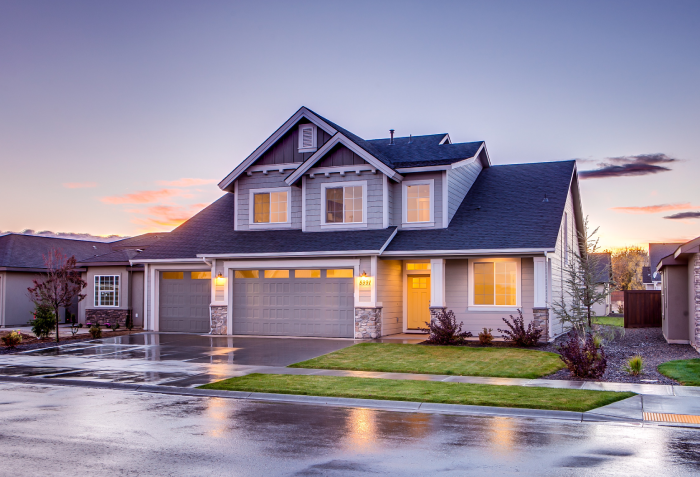Last Updated on January 22, 2025 by Alarm New England
When it comes to home security, the placement of your security cameras plays a crucial role in ensuring effective surveillance and protection. Whether you’re considering installing new cameras or optimizing the positioning of existing ones, strategic placement is key. In this article, we’ll explore the factors to consider and the best practices for security camera placement to help you maximize the security coverage of your property.
Understanding the Importance of Camera Placement
Effective security camera placement is essential for several reasons:
- Deterrence: Visible cameras act as a deterrent to potential intruders. When would-be criminals see surveillance cameras, they are less likely to attempt unauthorized access or criminal activities.
- Detection: Cameras in optimal positions can detect suspicious activity, allowing you to monitor and respond to potential threats in real-time.
- Evidence: In the unfortunate event of a security breach or criminal activity, well-placed cameras provide valuable evidence that can assist law enforcement in identifying and prosecuting the perpetrators.
- Peace of Mind: Knowing that your property is under surveillance provides peace of mind, allowing you to feel safer and more secure in your home.
Factors to Consider for Security Camera Placement
Before you start mounting cameras, consider these essential factors:
1. Property Layout: Familiarize yourself with the layout of your property. Identify key entry points, vulnerable areas, and locations where valuable assets are stored.
2. Camera Type: Different types of cameras are designed for various purposes, such as dome cameras for indoor use, bullet cameras for outdoor surveillance, and PTZ (Pan-Tilt-Zoom) cameras for flexible monitoring. Choose the right camera for each location.
3. Field of View: Understand the camera’s field of view (FOV) and angle of coverage. This determines what the camera can “see.” Ensure the FOV covers the areas of interest without blind spots.
4. Lighting Conditions: Consider lighting conditions throughout the day and night. Cameras should be placed to avoid glare, backlighting, or extreme shadows that could impair visibility.
5. Connectivity: Ensure that cameras are within range of your Wi-Fi network or can be connected via Ethernet cables if hardwired.
6. Privacy Concerns: Be mindful of privacy laws and avoid placing cameras in areas where individuals have a reasonable expectation of privacy, such as bathrooms or bedrooms.
Best Practices for Security Camera Placement
Now that you’ve considered the factors, here are some best practices for optimal security camera placement:
1. Entry Points: Install cameras near all entry points, including front and back doors, garage doors, and sliding glass doors. These are common entry points for burglars.
2. Perimeter: Cover the entire perimeter of your property, especially areas with limited visibility, like side yards and blind corners. This prevents potential intruders from approaching unnoticed.
3. High Traffic Areas: Place cameras in high-traffic areas where family members or visitors frequently move, such as hallways, staircases, and main living spaces.
4. Driveway and Parking: Position cameras to monitor driveways and parking areas. This helps you keep an eye on vehicles and any activity around them.
5. Yard and Garden: Cameras in your yard or garden can deter trespassers and vandals. They also capture activities in outdoor recreational areas.
6. Exterior Walls: Mount cameras on exterior walls or eaves to monitor the front and backyard. Ensure they are well-protected from weather elements.
7. Windows: Cameras near windows can capture any suspicious activity outside or monitor who approaches your home.
8. Height: Mount cameras at a height that is out of reach but provides a clear view of the area of interest. Typically, 8 to 10 feet above the ground is recommended.
9. Avoid Direct Sunlight: Install cameras in locations where they are not directly exposed to sunlight, as this can affect image quality.
10. Overlapping Coverage: Overlap camera coverage to minimize blind spots. This ensures that if one camera loses sight of an area, another one can pick up the coverage.
11. Night Vision: Consider cameras with night vision capabilities for areas with low light or nighttime surveillance needs.
12. Signs: Place visible signs indicating the presence of security cameras. These signs can act as a deterrent on their own.
Regular Maintenance and Monitoring
After installing your security cameras, it’s crucial to perform regular maintenance and monitoring to ensure they remain effective:
- Clean camera lenses to remove dust, dirt, or spiderwebs that can obstruct the view.
- Test camera angles and adjust them as needed to maintain optimal coverage.
- Check camera connections to ensure they are secure and functioning correctly.
- Monitor camera feeds periodically to identify any issues or suspicious activity.
Take The Precautions Needed To Secure Your Home
Strategically placing security cameras on your property is an essential aspect of your overall home security strategy. By considering factors like property layout, camera type, and field of view, and following best practices, you can optimize the placement of your cameras to maximize surveillance coverage. Regular maintenance and monitoring ensure that your security system continues to provide reliable protection, giving you peace of mind and enhancing the security of your home and loved ones.



